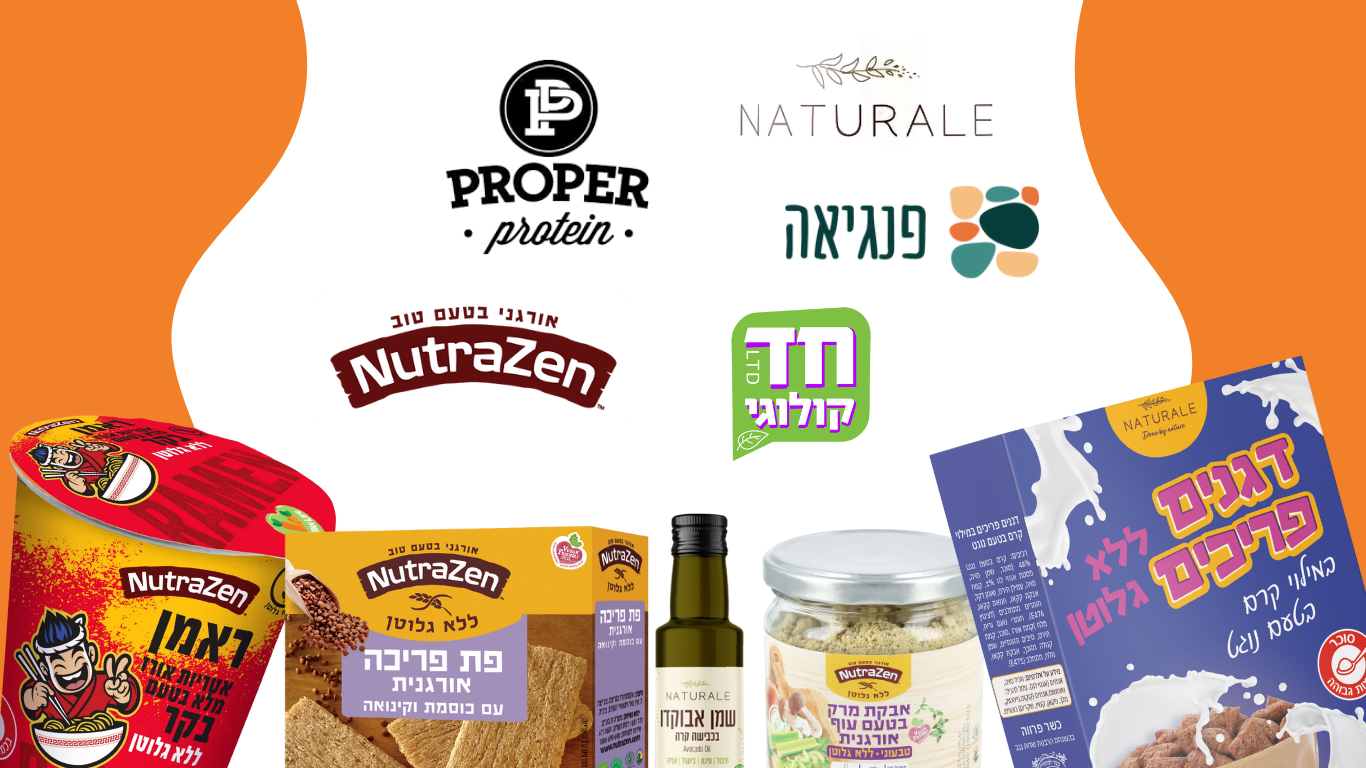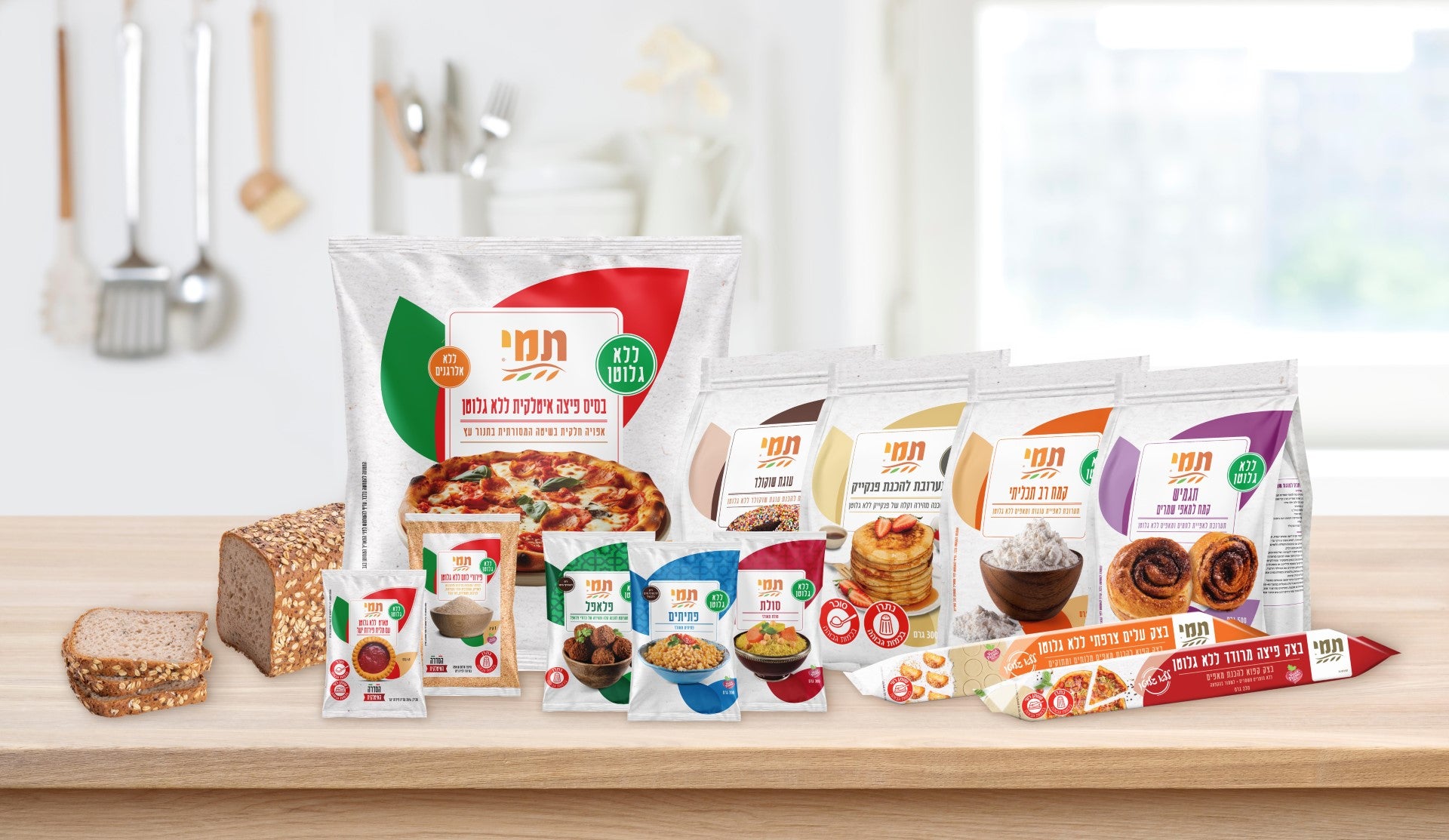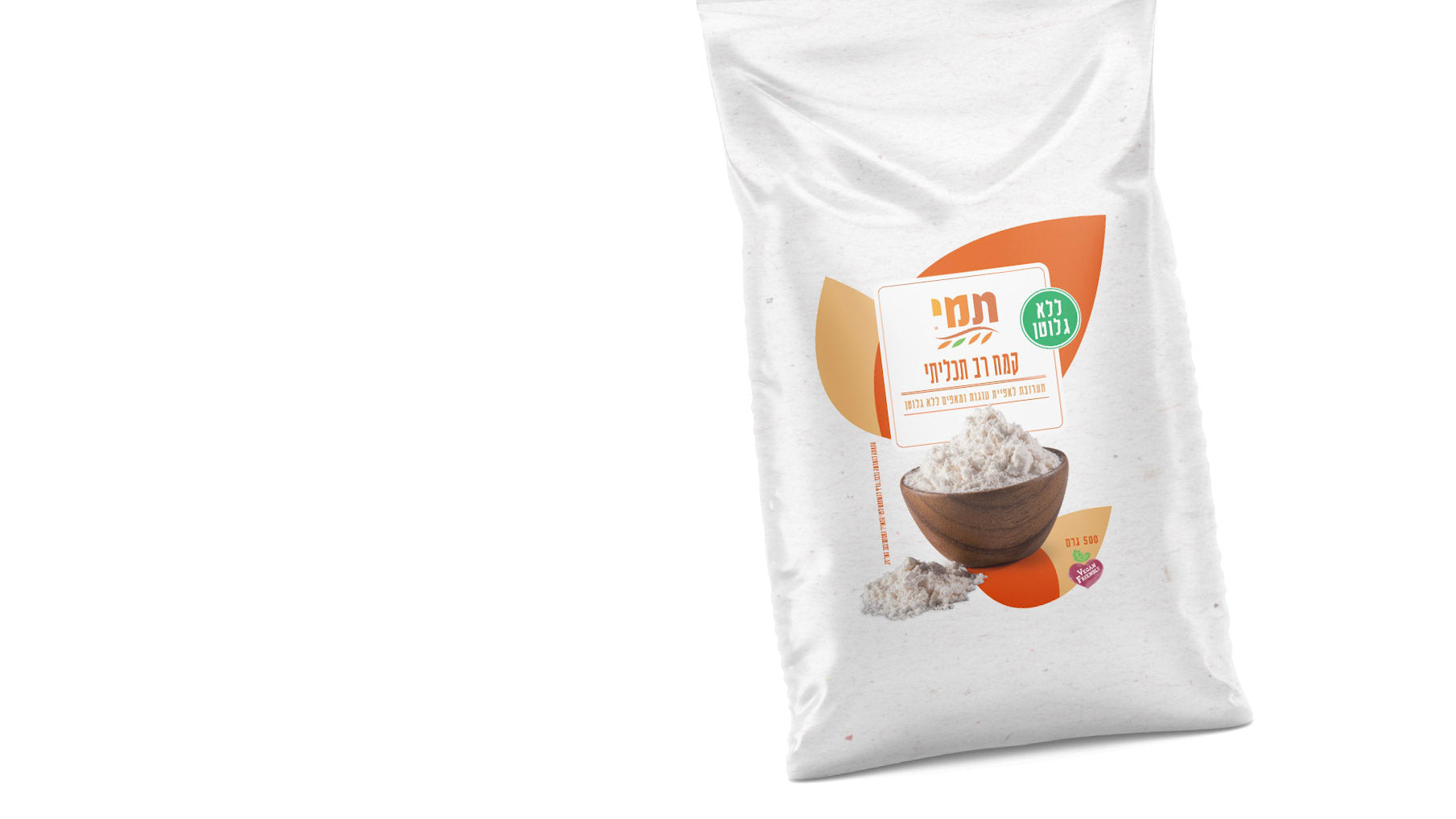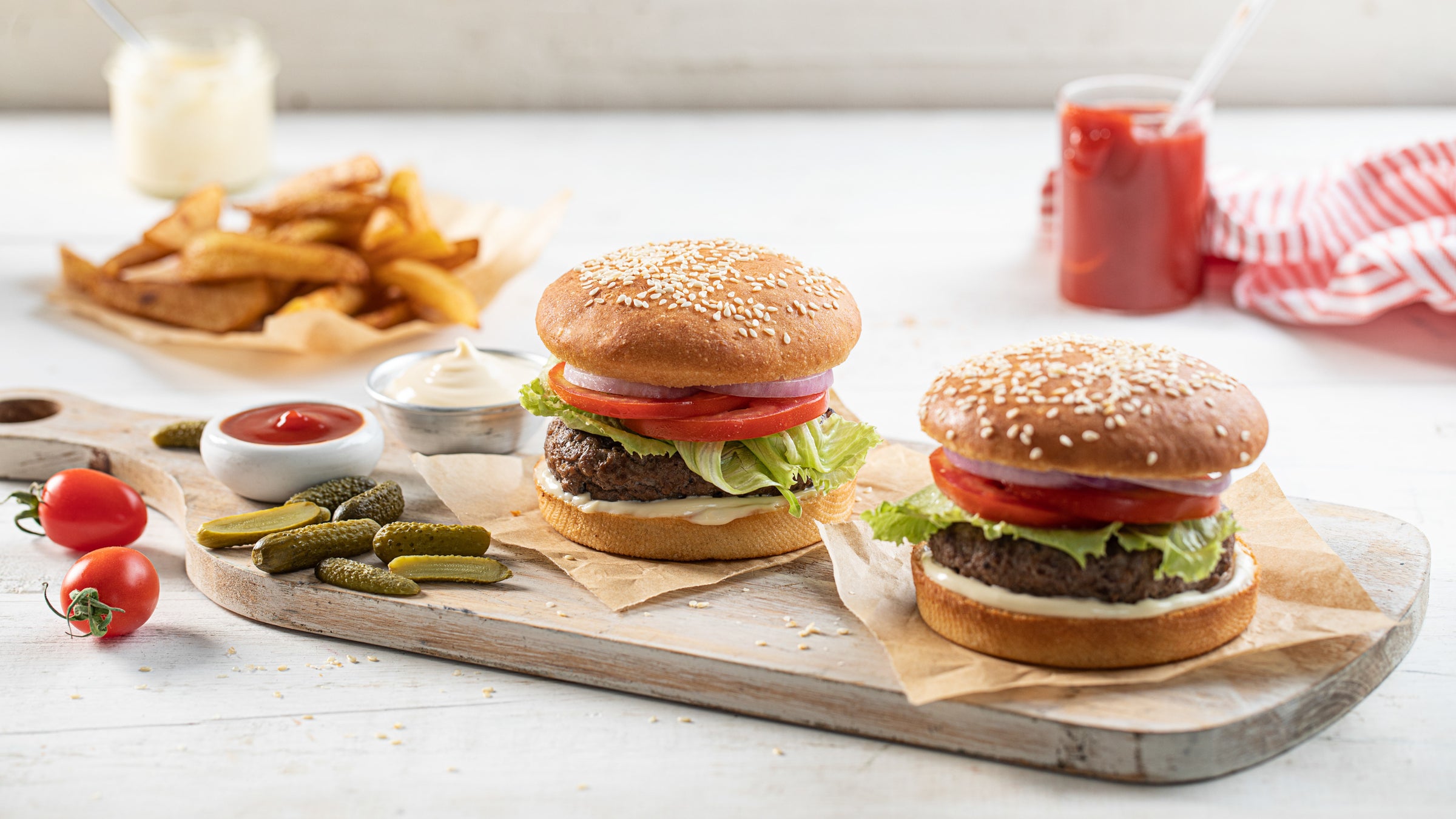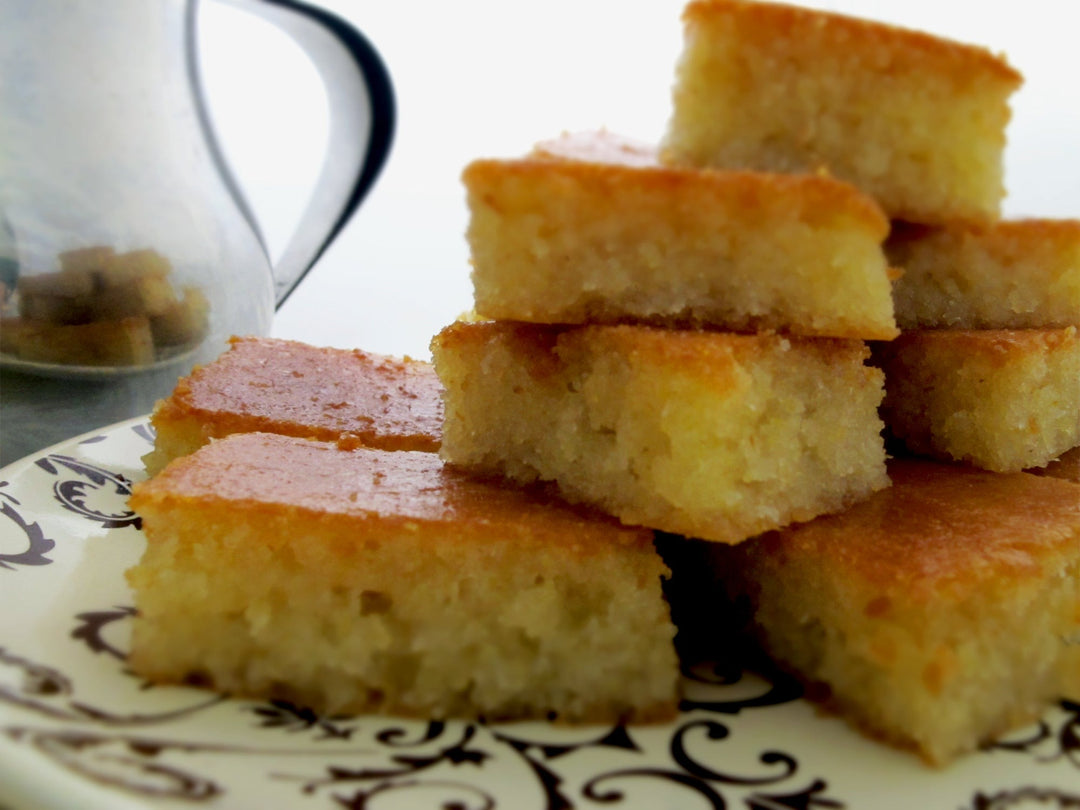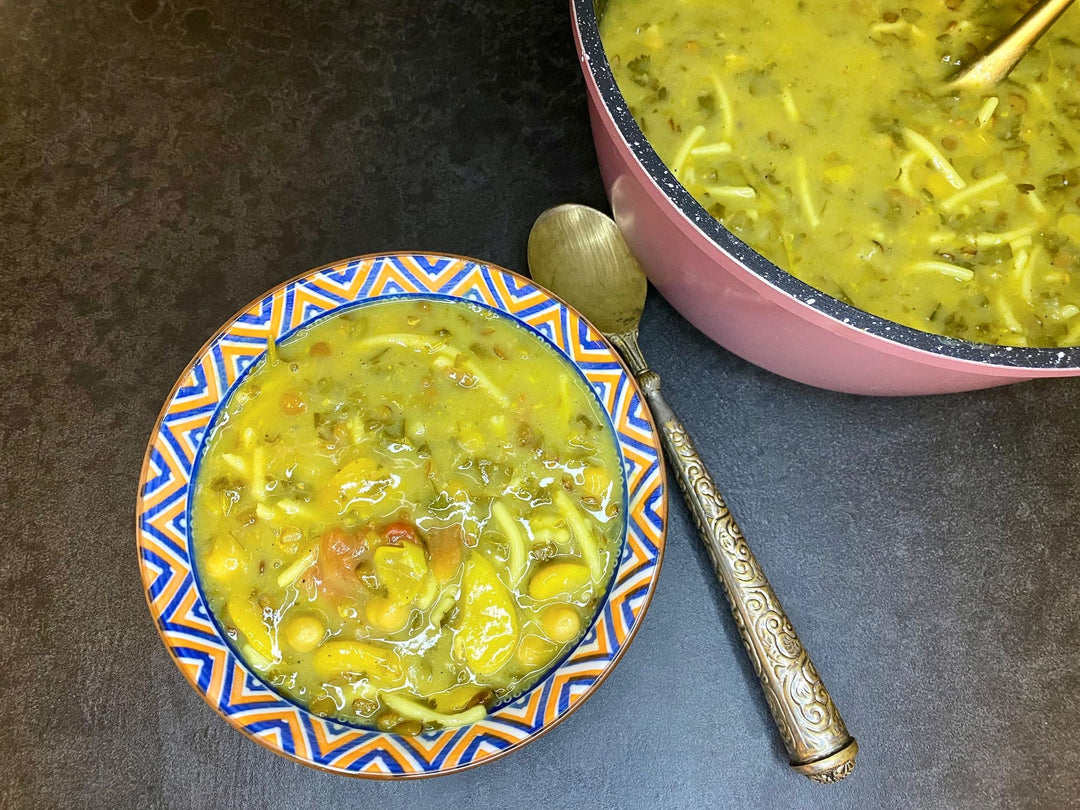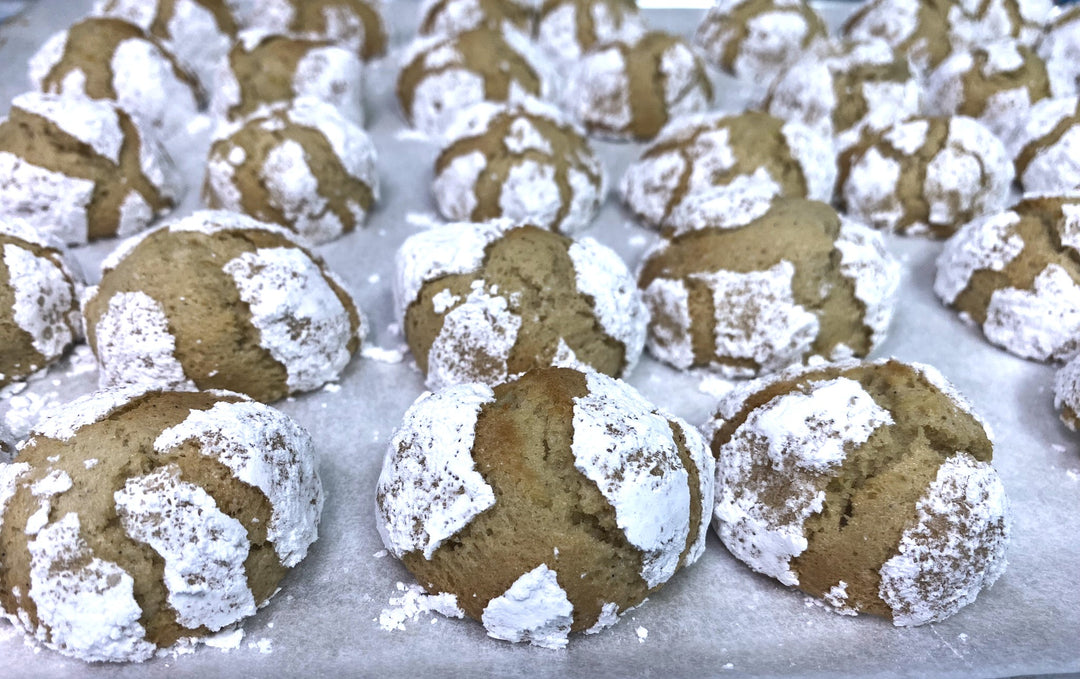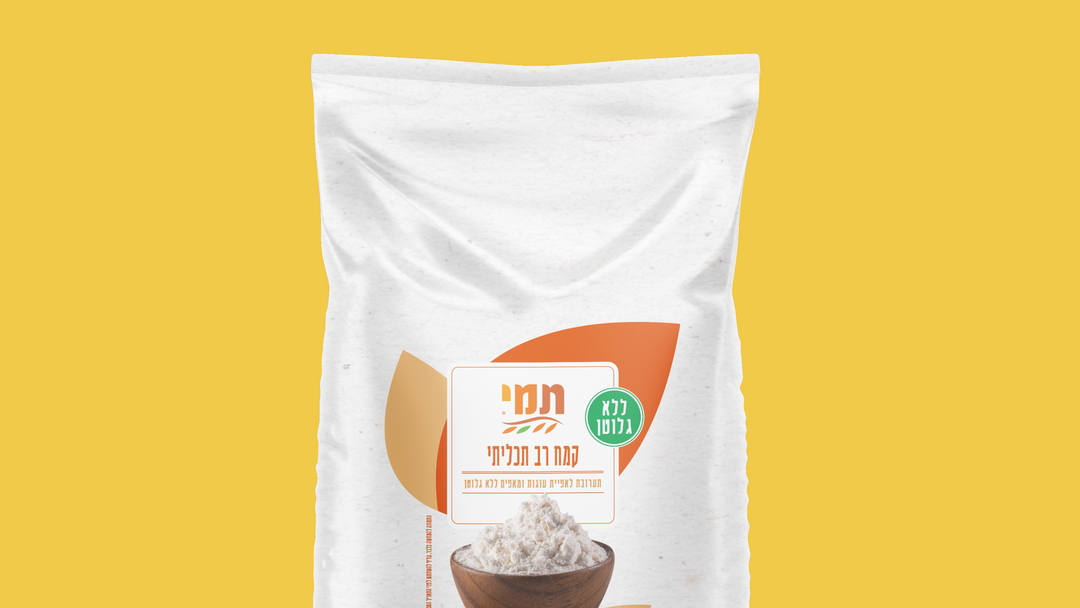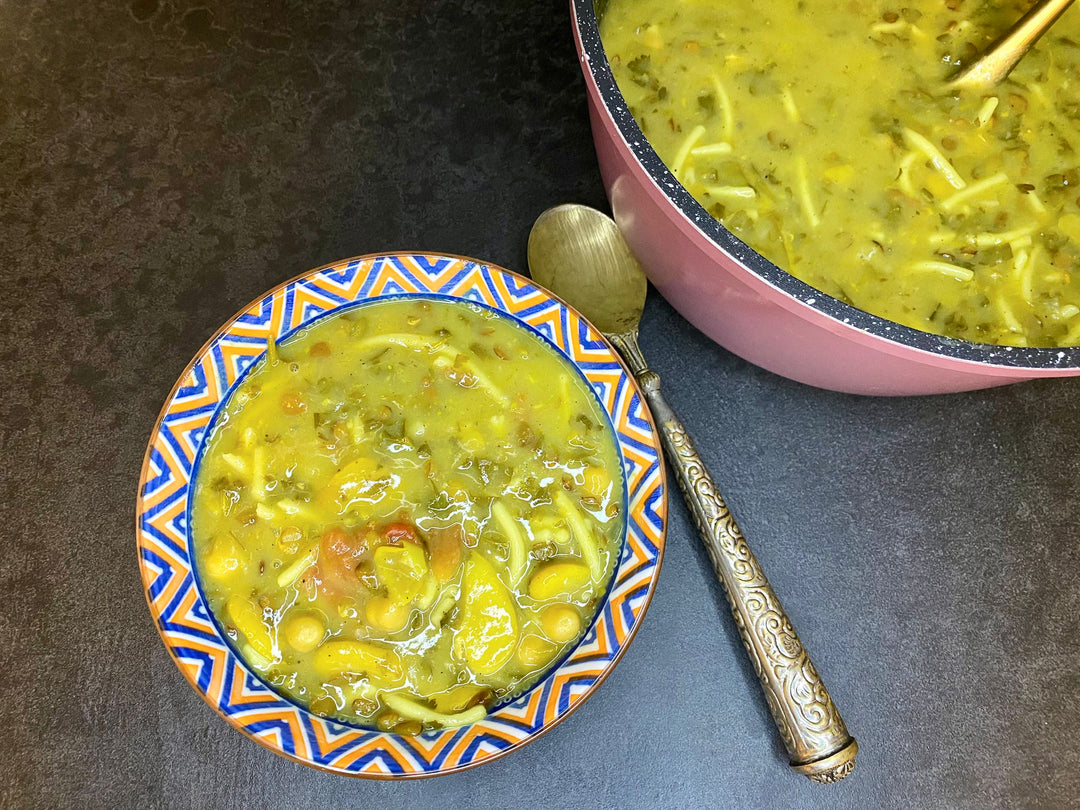Have you been diagnosed with celiac disease? Has your child been diagnosed with celiac disease? From a personal familiarity with the complex feelings that come with the diagnosis, it is very important for us to tell you that we are here for you, available for any question about kitchen adaptation, gluten-free recipes: cooking, baking, labeling gluten-free products and more.
years of experience
For about a decade, Tami Ben David has been leading the community of those avoiding gluten: guiding, advising, instructing, calming, accompanying, baking and feeding.
With the establishment of the new website of Tami Flour: gluten-free flours, we have compiled for you the many questions and answers she has answered over the years. Questions and answers are surely encountered by anyone who has been diagnosed with celiac disease during the 'journey' that begins with receiving the diagnosis and ending with adapting to the different lifestyle.
Have you been diagnosed with celiac disease? Has your child been diagnosed with celiac disease?
From a personal familiarity with the complex feelings that come with the diagnosis, it is very important for us to tell you that we are here for you, available for any question about kitchen adaptation, gluten-free recipes: cooking, baking, labeling gluten-free products and more.
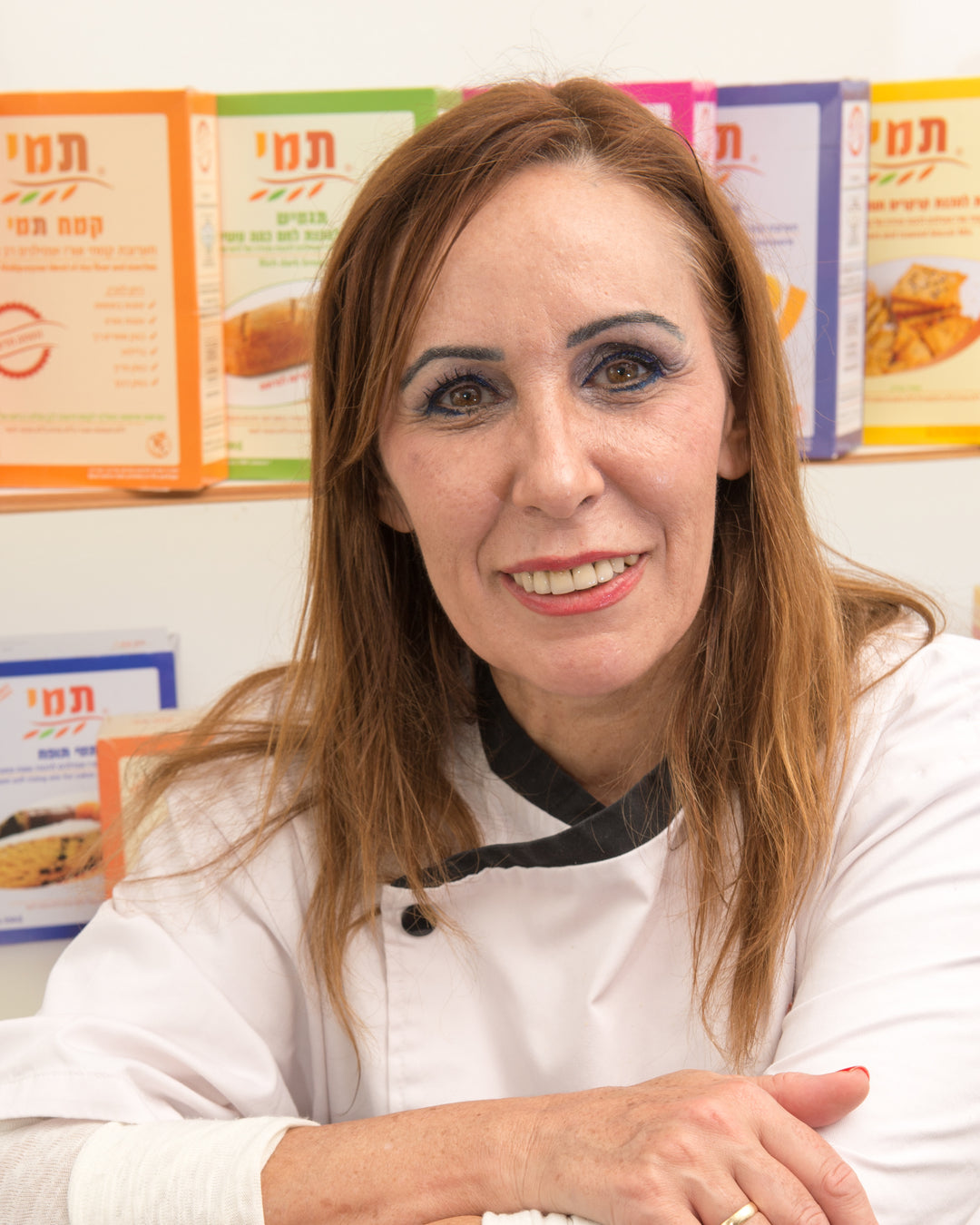
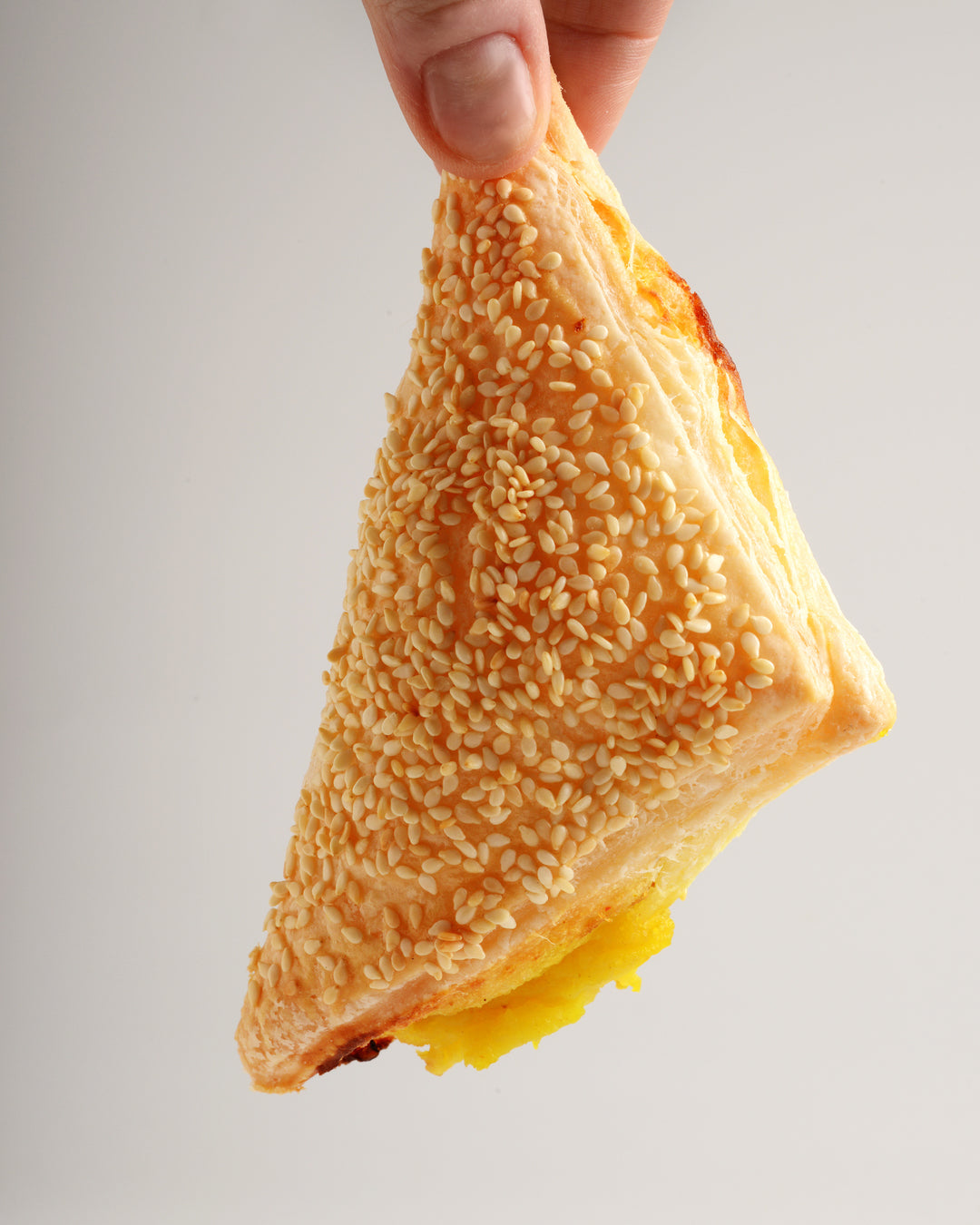
Background on celiac disease
Celiac disease is an inherited autoimmune intestinal disease caused by sensitivity to gluten - a protein found in certain grains.
All foods and beverages containing wheat: bread and any pastry made from wheat flour, couscous, bulgur, semolina, bran, spelled, wheat starch, wheat grass, wheat kernels, durum wheat, breakfast cereals containing gluten, crackers, croutons, soup almonds, beer.
Foods containing rye: bread, matzah, crackers.
Foods containing barley: pearl barley, malt
Foods containing oats: Quaker, granola, yogurt with granola, oat bran. Oats contain a gliadin-like protein called abenin.
'Secondary infection' is a familiar concept among celiac patients. This refers to the contamination created as a result of preparing food in an environment that is not gluten-free.
In such a case, even if it is a gluten-free dish, a celiac will not be able to eat it. for example:
Cutting a salad on a cutting board on which bread has been cut, frying chips in the oil in which schnitzels were fried and making gluten-free toast in a regular toaster
It is currently estimated that 1% of the world's population suffers from celiac disease, that is - 1 in every hundred people.
The rate of diagnosed patients is on an upward trend and it is estimated that the upward trend is due to a real increase in the number of patients and not because of the increase in awareness and the improvement of diagnostic methods.
Yes. Celiac disease is a hereditary disease. It can only appear in people who carry certain genes, that's why you can see families with several celiac patients over generations.
The disease can be diagnosed through a blood test, upon referral by the family doctor, in some cases it is also necessary to take a sample of the intestinal tissue in an invasive test.
Yes. Studies have found that the ratio between men and women with celiac disease is about 1:3, so the disease is almost three times more common among women.
How should I adapt the kitchen to the needs of a celiac patient?
When cooking and baking for celiac patients, it is better to avoid using tools that may accumulate food residues such as a cutting board, rolling pin, wooden spoons, pop-up toaster and triple toaster, etc.
To avoid confusion that may cause secondary contamination, it is better to allocate a separate place in the kitchen for keeping gluten-free dishes and mark the place with a note, for the information of the public who use the kitchen.
Of course, even in utensils such as pots, silicone spoons, Pyrex bowls and more, which are used for cooking and baking for all family members, it is important to observe a high level of cleanliness. Also of the hands and nails.
Recommended. Designating a place in the kitchen for gluten-free food and kitchen utensils used for gluten-free cooking and baking will make it easier for those using the kitchen, prevent secondary contamination and reduce the phenomenon of household members "accidentally" eliminating gluten-free snacks.
it is possible Since the dough has a tendency to get into all kinds of small holes in the mixer that are very difficult to clean, many families with celiac disease have an additional mixer that is used to bake gluten-free breads.
Definitely buy spices labeled gluten-free.
Look for the "gluten-free" label on the spice package to avoid using spices that have been exposed to gluten during production.
Be sure to purchase spices marked by well-known, high-quality companies with GMP standards.
Do not buy spices by weight or in unmarked bags in markets
Celiac disease in the family and social sphere
Observe some leading rules in your family behavior regarding food preparation:
Make sure (as much as possible) that all the products you use for cooking and baking on a daily basis are gluten-free - spices, soy, sauces, cheeses, quality pastas, meats, sweets, chocolate, ice creams, etc.
Be sure to prepare an alternative gluten-free dish for holidays, events and birthdays. So terrible', the variety of gluten-free foods is rich, simple and available - vegetables, fruits, meat, fish, cheeses, eggs and legumes and you can prepare many delicious, nutritious and satisfying dishes from them. Over time you will also learn the successful recipes that are right for you and get into a healthy routine And gluten-free food is part of the family diet.
Yes. In order not to alarm those who are new to gluten-free baking (and always want to prepare refreshments suitable for celiacs), we can summarize some convenient and simple principles that can be applied in every home:
Choose only ingredients that say "gluten-free"
Work on a clean surface
Use clean dishes that came out of the dishwasher. Not a wooden vessel
If possible, avoid using a mixer that may contain gluten and mix by hand
Prefer an aluminum or disposable mold
Do not put the pastry in the oven with other pastry containing gluten
Recommended - use a variety of gluten-free ready-made baking mixes, they are high-quality, tasty and will make life easy for you.
Questions about gluten-free baking
The conversion with Tami flour 'flexible improved formula' is in a ratio of 1:1 (just replace the flour)
Definitely yes. You can freeze half of the dough or the prepared pastries after baking and thaw when needed.
The role of gluten in the preparation of the dough is to 'bind' the water and 'trap' the carbon dioxide emitted by the yeast, to produce the swelling.
Gluten is a component of wheat protein, found in each of the five types of grain - barley, wheat, spelt, oats and rye.
Gluten as it's name is - glue (Glue = glue) and that's why in Hebrew it's called devikah.
Glutenin and gliadin connect in contact with water and movement and form chains. These chains form an elastic gluten network with the ability to stretch and contract, which after proper kneading becomes the swelling we know in dough.
Yes. Using Tami flour (gluten-free flour) solves the problems of crumbling and not keeping the freshness that characterizes most gluten-free pastries (that were not baked with Tami flour). In baking with Tami flour, you will see that both the preparation process and the result are very similar to regular pastries that include gluten.
Products baked from Tami flour are kept fresh even the next day and do not necessarily require freezing or refrigeration as we are used to with gluten-free products.
The preservation of freshness in the home baking of breads with Tami flour is equivalent to home and non-industrial baking since there is no addition of preservatives and/or improving substances that extend shelf life.
The recommendation is to keep the bread in the refrigerator for up to 3 days and reheat it briefly.
For a longer period - freeze and thaw as needed.
Yes. In some recipes - our dough will be slightly stickier than dough made from regular flour. The reason lies in the richness of the fibers in it and these will be absorbed from the dough liquids during the swelling. The liquids are also essential for the activity of the yeast and therefore this multiple importance of accepting the dough as it is and not insisting on turning it into what it is not.
Our motto - we don't try to change the dough - we change our perception of how dough should look. The test of the final result is what determines!
Tami flour mixes of all kinds: gluten-free flours, completely clean and without fear of secondary contamination of all the main allergens: milk, eggs, fish, seafood, nuts, peanuts, sesame, celery, gluten, coconut, soy and sesame.
Appropriate tests are done regularly for each production cycle.
Fresh yeast or rather 'moist' yeast is the yeast that is found on the refrigerated shelves in the supermarket ie: 'yeast' (a cube and bag) while dry yeast is found on the regular shelves (usually near baking needs). It can be converted in any recipe according to the following ratio: weight of dry yeast X 3 = fresh yeast (and a division operation for the opposite case), that is: 10 g dry yeast = 30 g fresh. If half a cube of fresh yeast is specified in the recipe, it can be replaced with a tablespoon of dry yeast.
Yes. Multi-purpose Tami flour - gluten-free flour , suitable for use in any recipe (successful, of course) that exists on the net, in regular recipe books, in yellowed notes passed down from the grandmother, and also traditional recipes from the diaspora without the need for additives or any other special adjustment. Simply convert one to the other, as is customary in baking, according to weight (the accepted standard is that 1 cup of flour = 140 g) and as specified on the front of the package: for all types of dough except for breads which must be made with flour for baking bread and yeast pastries (Tami Segol) .
Details about the baking workshops can be obtained on the 4chef website.
Yes. It is necessary to add a teaspoon (5 g) of baking powder to each cup (140 g) of all-purpose tami flour.
Slow rise in the fridge - always recommended. And the reasons for this recommendation are:
Our flour (flexible) contains a rich variety of water-soluble fibers. Different purposes and properties for each type of fiber, but all of them together, are supposed to simulate the properties of gluten, which are flexibility, aroma, shelf life and liquid absorption. Those whose purpose is to absorb liquids and store them to be released during baking are slower in their action than the yeasts which, as mentioned, also use the liquids in the dough but for a different purpose. Since the cooling slows down the activity of the yeast but does not affect the activity of the fibers - we create a kind of balance.
Contribution to the taste and texture - during the delay, the yeast develops organic acids and alcohol and these contribute to the taste and texture, but for those who do not like this contribution, I would recommend using a little less sugar to slow down the activity of the yeast or add the yeast about half an hour after preparing the dough and from that point start the rising.
Rises in refrigeration regardless of yeast - when the dough is low in liquid but rich in butter/yolks (brioche). Here the cooling comes to stabilize the dough through the solidification of the fat and allow the absorption of the liquids present, even if in a small amount, in these ingredients.
The "little one" is designed to extract the gases that have accumulated up to the current bloating stage and encourage the constitution effect of the strong that survive among the strong microorganisms (yeast...). These will create more gases and will swell the dough during the baking stage. Thin doughs, rich in liquids, are recommended to be reduced several times during rising.
Fiberx fibers - dietary fibers that are extracted from sugar beets, absorb liquids, bind the dough and give it flexibility.
Xanthan gum - dietary fiber from corn, which contributes to a firm texture. Especially useful for fancy cakes.
Chia seeds - seeds rich in vitamins and omega 3, which improve the flexibility of pastries and create a texture closer to bread.
Baking improvers - a ready-made mixture of dietary fibers and stabilizers, which mimics the action of gluten.
Questions about labeling and consumption of gluten-free products
To ensure that the product is gluten-free, look for the "gluten-free" label on the packaging.
Marking a food product with the words "gluten-free" is an authorized marking at the manufacturer's discretion and responsibility.
If the manufacturer chooses to mark the product with the "gluten-free" marking, he must meet three conditions:
The factory has a GMP certificate from the Ministry of Health
The product contains less than 20 grams of gluten
All the necessary steps have been taken to ensure that the raw material and the product do not contain gluten at a level above 20 halal.
These conditions are intended to ensure that only a product that does not contain gluten at a level equal to or less than 20 grams will be marked as "gluten-free" for the purpose of providing accurate information to consumers who wish to avoid its consumption.
No. In these products it is not possible to know what the amount of gluten is and whether it is below the permitted level of 20PPM, so it is better not to take a risk.
No. If it is not written on the product "gluten-free" there is no guarantee that the product is indeed gluten-free. Even a product that does not contain gluten at the component level, may contain gluten from secondary contamination (exposure to gluten during production).
In such cases, you can contact the manufacturer and get an accurate and safe answer.
No. Many studies done on the subject show that exposure to gluten, even if little and only rarely, triggers the immune system's response, which creates tissue damage and inflammation in the intestine.
The injury occurs even when there are no external symptoms, so after the diagnosis gluten must be avoided completely.
Have a question we didn't answer?
You can always send us questions through the comments below, through the contact form on the website or on our Facebook page.



